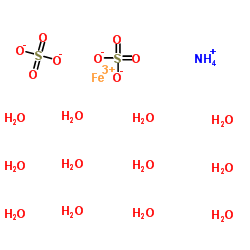Aging increases amyloid beta-peptide-induced 8-iso-prostaglandin F2alpha release from rat brain.
Luigi Brunetti, Barbara Michelotto, Giustino Orlando, Lucia Recinella, Chiara Di Nisio, Giovanni Ciabattoni, Michele Vacca
文献索引:Neurobiol. Aging 25(1) , 125-9, (2004)
全文:HTML全文
摘要
In order to investigate whether amyloid beta-peptide-induced oxidative damage in the brain could be related to aging, we studied the release of 8-iso-prostaglandin (PG)F2alpha, a stable marker of cellular oxidative stress, in brain synaptosomes from Wistar rats of different ages (3, 6, 12, 18 months old), both basally and after amyloid beta-peptide (1-40) perfusion. We found that basal release of 8-iso-PGF2alpha was not significantly different among all age groups of rats. Either phospholipase A2 activation induced by calcium ionophore A23187 (10 nM) or amyloid beta-peptide (5 microM) did not modify isoprostane release, when these substances were used alone. In contrast, amyloid beta-peptide (1-5 microM) preincubation caused a dose-dependent increase of A23187-stimulated 8-iso-PGF2alpha release in each age group, which was also strikingly correlated to aging of rats. Furthermore, ferric ammonium sulfate stimulates isoprostane production to levels comparable to those induced by amyloid beta-peptide. In conclusion, although 8-iso-PGF2alpha production from rat brain synaptosomes is independent from aging in the basal state, aging renders neurons more vulnerable to amyloid beta-peptide-induced oxidative toxicity.
相关化合物
| 结构式 | 名称/CAS号 | 分子式 | 全部文献 |
|---|---|---|---|
 |
硫酸高铁铵,十二水
CAS:7783-83-7 |
FeH28NO20S2 |
|
Iron ions derived from the nitric oxide donor sodium nitropr...
2006-08-07 [Eur. J. Pharmacol. 542(1-3) , 48-53, (2006)] |
|
Measurement of plasma hydroperoxide concentration by FOX-1 a...
2003-11-01 [Clin. Chim. Acta 337(1-2) , 147-52, (2003)] |
|
Iron regulates xanthine oxidase activity in the lung.
2002-09-01 [Am. J. Physiol. Lung Cell. Mol. Physiol. 283(3) , L563-72, (2002)] |
|
Comparison of the ability of ferric complexes to catalyze mi...
1988-08-01 [Arch. Biochem. Biophys. 264(2) , 482-91, (1988)] |
|
Microencapsulated iron for milk fortification.
2003-12-17 [J. Agric. Food Chem. 51(26) , 7770-4, (2003)] |